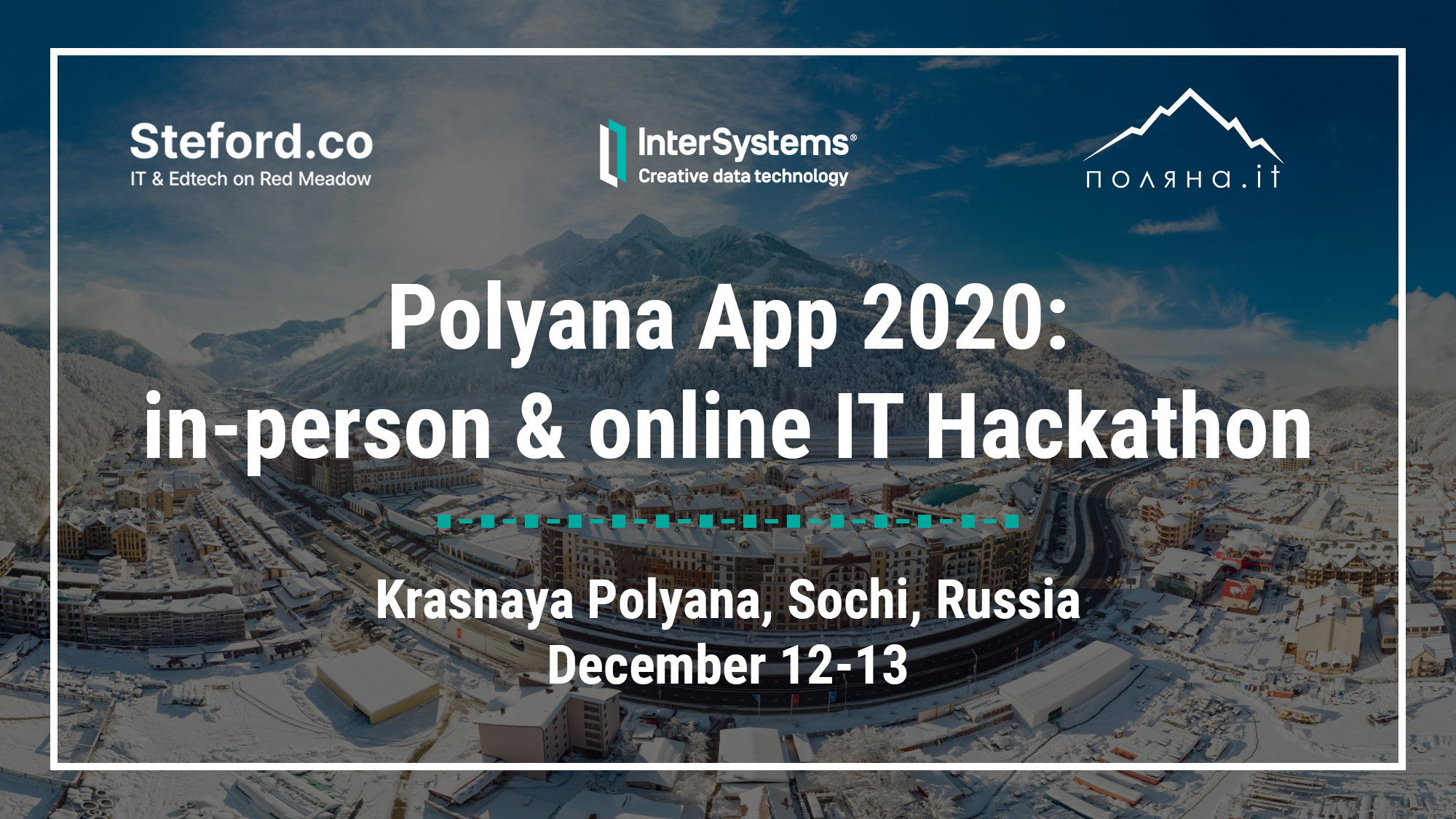🏆 Create an innovative service for Krasnaya Polyana IT cluster participants and locals! 🏆
Steford group together with the Polyana IT community with the support of InterSystems Corporation invite you to join Polyana App 2020 Hackathon!
If you are suddenly now in Krasnaya Polyana, Sochi, Russia and want to share your ideas, your IT & business energy, come, participate, suggest and cheer for the teams on December 12-13 at the Steford coworking space. Or participate online!
Create the most helpful service for local IT infrastructure, business, and citizens and get the first prize of $1,400 and the opportunity to participate in the InterSystems track of MIT Grand Hack 2021!
More details in English can be found here.
➡️ Visit the official landing page in Russian.
